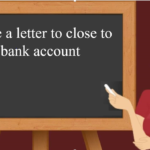1) Question: Identify the preposition of place in the sentence: “The cat is under the table.”
A) Cat
B) Under
C) Table
A) Cat
B) Under
C) Table
Show/Hide
Answer: B) Under
Explanation: “Under” is the preposition of place indicating the location of the cat.
2) Question: Choose the correct preposition of time in the sentence: “The meeting is scheduled at 4 PM.”
A) Meeting
B) Scheduled
C) At
A) Meeting
B) Scheduled
C) At
Show/Hide
Answer: C) At
Explanation: “At” is the preposition of time indicating the specific time of the meeting.
3) Question: What type of preposition is “through” in the sentence: “She walked through the park”?
A) Preposition of movement
B) Preposition of place
C) Preposition of time
A) Preposition of movement
B) Preposition of place
C) Preposition of time
Show/Hide
Answer: A) Preposition of movement
Explanation: “Through” is a preposition of movement, describing how she walked through the park.
4) Question: Identify the preposition of direction in the sentence: “He went to the store.”
A) He
B) Went
C) To
A) He
B) Went
C) To
Show/Hide
Answer: C) To
Explanation: “To” is the preposition of direction indicating the destination.
5) Question: Choose the preposition of agent in the sentence: “The book was written by the author.”
A) Book
B) Was
C) By
A) Book
B) Was
C) By
Show/Hide
Answer: C) By
Explanation: “By” is the preposition of agent indicating the authorship of the book.
6) Question: What type of preposition is “because of” in the sentence: “The flight was delayed because of bad weather”?
A) Preposition of cause or reason
B) Preposition of time
C) Preposition of place
A) Preposition of cause or reason
B) Preposition of time
C) Preposition of place
Show/Hide
Answer: A) Preposition of cause or reason
Explanation: “Because of” is a preposition of cause or reason, explaining why the flight was delayed.
7) Question: Identify the compound preposition in the sentence: “The cat is sitting in front of the fireplace.”
A) Cat
B) Is sitting
C) In front of
A) Cat
B) Is sitting
C) In front of
Show/Hide
Answer: C) In front of
Explanation: “In front of” is the compound preposition indicating the position of the cat.
8) Question: Choose the correct preposition of instrument or device in the sentence: “She cut the paper with scissors.”
A) She
B) Cut
C) With
A) She
B) Cut
C) With
Show/Hide
Answer: C) With
Explanation: “With” is the preposition of instrument or device indicating the tool used.
9) Question: What type of preposition is “in case of” in the sentence: “Bring an umbrella in case of rain”?
A) Preposition of condition
B) Preposition of place
C) Preposition of time
A) Preposition of condition
B) Preposition of place
C) Preposition of time
Show/Hide
Answer: A) Preposition of condition
Explanation: “In case of” is a preposition of condition, describing the circumstance for bringing an umbrella.
10) Question: Identify the preposition of comparison in the sentence: “She is taller than her friend.”
A) She
B) Taller
C) Than
A) She
B) Taller
C) Than
Show/Hide
Answer: C) Than
Explanation: “Than” is the preposition of comparison indicating the comparison of height between two individuals.





